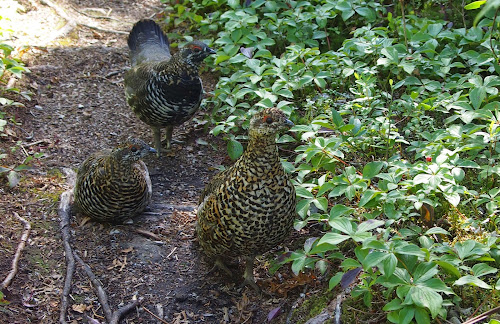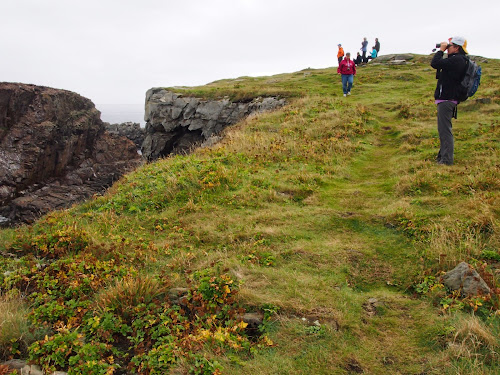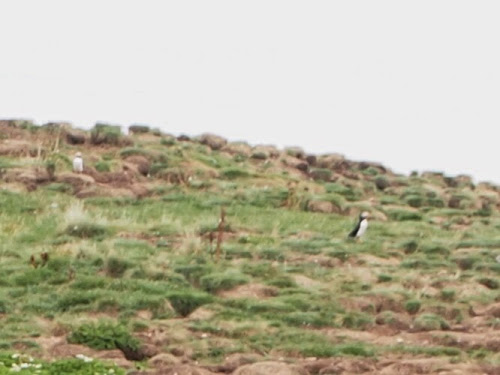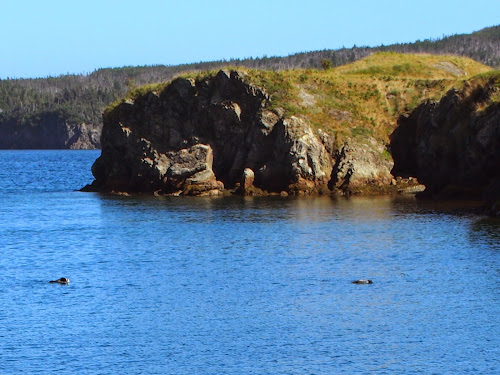On our way east, we passed by Gander, the favored emergency landing spot for North Atlantic airtraffic and stopped to hike at Terra Nova National Park. With budget cuts to Parks Canada, the visitor center was closed, but we headed out on what turned out to be a fairly grueling loop walk that took us up and down along both a saltwater inlet and freshwater lake and over the hill in between. Along the way, we encountered a group of spruce grouse hanging out on the path.
In another out and back adventure (remember the lack of roads), we took the road out to near the end of the Bonavista peninsula to the town of Elliston, justly famous as the most likely place to see puffins from land. As we knew beforehand, it was well passed the time of year to see puffins, except for a few stragglers. So, we were pleased to see perhaps five or ten puffins on a little island close by shore with just a “tickle” of water running in between. The puffins would try to find a good landing place with a beak full of fish and be harassed by the much larger seagulls trying to steal a meal from the puffins.
Elliston also claims to be the root cellar capital of the world. As far as we could tell, they may just be unrivaled on that score. There were plenty of root cellars evident around town.
A little further out at Cape Bonavista was the nicest lighthouse we’ve ever visited. The lighthouse keeper had a prestigious position in the community and the home reflected his status. The living quarters were spacious and nicely appointed by 19th century standards. The downside was that he (or his assistant keeper) had to wind the mechanism to rotate the light every two hours during the night.











